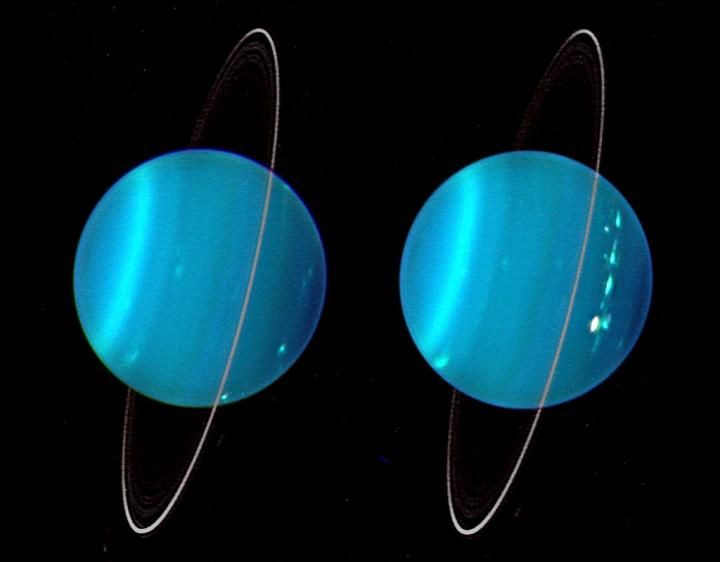Uranus Got Hit By Earth-Sized Icy Body, Astronomers Reveal
KEY POINTS
- Astronomers revealed that Uranus collided with an Earth-sized object
- The collision caused Uranus to tilt on its side
- The planetary collision led to the formation of Uranus' icy moons
Astronomers have discovered the reason behind the strange orbit and axis of the planet Uranus. According to a new study, the planet was most likely hit by a massive icy object that could be as big as Earth.
Compared to other planets in the Solar System, Uranus has a unique axis. Observations revealed that the planet is tipped by over 90 degrees relative to the Solar System’s plane.
It is widely believed that Uranus’ strange axis was caused by a planetary collision. Recently, through computer models, a team of astronomers was able to uncover the details of the impactor that knocked Uranus to its side. Details of their findings were presented in a new study published in the journal Nature Astronomy.
The astronomers were able to create the model based on the system of moons orbiting Uranus. In total, this planet has 27 natural satellites, many of which have icy surfaces. Like Earth’s Moon, astronomers believe that these natural satellites may have been caused by a collision with a massive object.
Since most of Uranus moons have icy compositions, astronomers believe that the massive object that collided with Uranus during its early years could also be covered in ice. Given the amount of planetary debris produced by the collision, astronomers believe that the icy impactor could be about one to three times the mass of Earth.
Although Uranus is known as the third largest planet in the Solar System, getting hit by an Earth-sized object could still have significant effects on the cosmic body.
Aside from explaining Uranus’ unique axis and the formation of its moon system, the astronomers noted that their computer model could also be applied to the concept of planetary formation. For instance, the same model can be used to investigate the formation of other icy bodies in the Solar System such as Neptune.
“This model is the first to explain the configuration of Uranus' moon system, and it may help explain the configurations of other icy planets in our solar system such as Neptune,” the study’s lead author Shigeru Ida said in a statement.
“Beyond this, astronomers have now discovered thousands of planets around other stars, so-called exoplanets, and observations suggest that many of the newly discovered planets known as super-Earths in exoplanetary systems may consist largely of water ice,” he added.

© Copyright IBTimes 2024. All rights reserved.





















